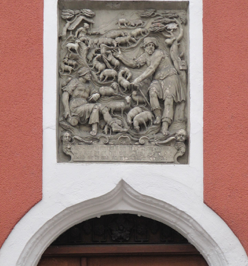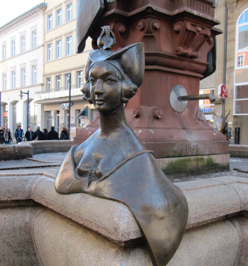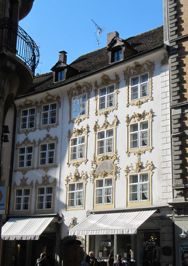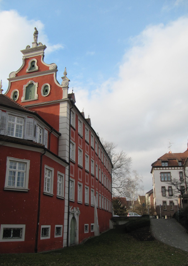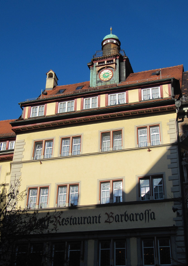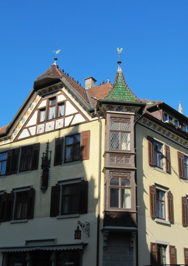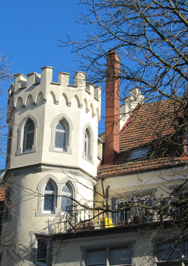KONSTANZ
south side of Lake Constance
Baden-Württemberg, GERMANY
europe
JANUARY 24 - February 6, 2011


KONSTANZ
south side of Lake Constance
Baden-Württemberg, GERMANY
europe
JANUARY 24 - February 6, 2011


Konstanz is located on Lake Constance, the second largest lake in Europe, known in German as the Bodensee. The countries of Germany, Switzerland, and Austria border this large, deep lake, the source of water for most of southern Germany. The town, home to 80,000 inhabitants, also stands on the edge of the Rhine River that passes through Konstanz, with its source in the Swiss Alps. Approximately 80,000 people live in the town that dates back to the Stone Age, The first settlement, begun by the Romans in 50 AD, was most likely named after the Roman emperor, Constantia Chlorus who fortified the town, around 300 AD. The city became an important spiritual center in 585 when the first bishop took residence in Konstanz. Trade thrived by the Middle Ages as Konstanz owned the only bridge in the region that crossed the Rhine. A prosperous city because of its trade and internationally known linen production, Konstanz was elevated to the status of Imperial City in 1192, subject only to the Holy Roman Emperor. Between 1414 and 1418, Konstanz hosted the Council of Konstanz. During this period, a schism had occurred in the Catholic church, producing three popes, one each in the cities of Pisa, Avignon, and Rome. The conclave, the only one held in Germany or north of the Alps, solved the problem by electing Pope Martin V who was enthroned in the Konstanzer Münster Cathedral in 1417. By the late Middle Ages, 25% of the inhabitants were exempt from taxes because of their clerical rights. Toward the end of the Middle Ages, the fortunes of Konstanz declined. The city was bitterly defeated in the Swabian War in 1499 when it lost control of Kreuzllingen, which allied itself with Switzerland. In 1526, the Bishopric was moved across the Bodensee to Meersburg. In 1548, Konstanz lost its status as sovereign city during the Schmalkaldic War and belonged to Austria for the next 250 years. The Habsburg emperors re-Catholicized the city by building a Jesuit college and an adjoining theater in 1610, the oldest theater in Germany with regular performances. The economic decline of Konstanz was further exacerbated by the shift in trade routes to the harbors of northern Germany after the discovery of the New World. Konstanz was annexed to the Grand Duchy of Baden in 1806 and regained some of its importance with the beginning of tourism. In 1871 the town became part of the German Empire during the unification of Germany. During World War II, because of its proximity to neutral Switzerland, Konstanz was spared bombing attacks. The mayor of Konstanz insisted the citizens keep their lights on during the blackouts, disguising the town as Swiss. After the war, Konstanz was included first in South Baden, then in the new state of Baden-Württenberg. Henry and I have visited Konstanz many times, and wanted to revisit this charming town during our world wide travels. The close proximity by ferry to Meersburg am Bodensee, where we learned German in 1994, plus other fascinating Swiss and German towns made this a wonderful destination. Though we enjoyed the beauty of the snow this winter, we still have a desire to see this lovely area in summer, when swimming in the lake is de riguer, and the “Blumen Insel Minau”, incorporated into Konstanz, is filled with flowers in bloom.
PHOTO: Left Column: 1. Building in Konstanz with half-timbering and a typical roofline. The three-story boxed windows, capped by an ornamental cupola. 2. A crenelated turret on a large mansion in the historic area of Konstanz. Center, Top: Gate and clocktower dating from Medieval times, part of the old city wall. Center, Middle: Deeply carved bas relief above a doorway in the historic center of Konstanz. Center, Bottom: Detail: bronze figure, one of the embellishments to an old fountain, the images referring to figures at the Council of Konstanz 1414-1418 Right Column: 1. Clocktower and its neighbor, a half-timbered house, one of the predominant styles of architecture seen in Konstanz. 2. An abbey in Konstanz. 3. A building in the Baroque style of the 18th century.


Most Southern German Town
